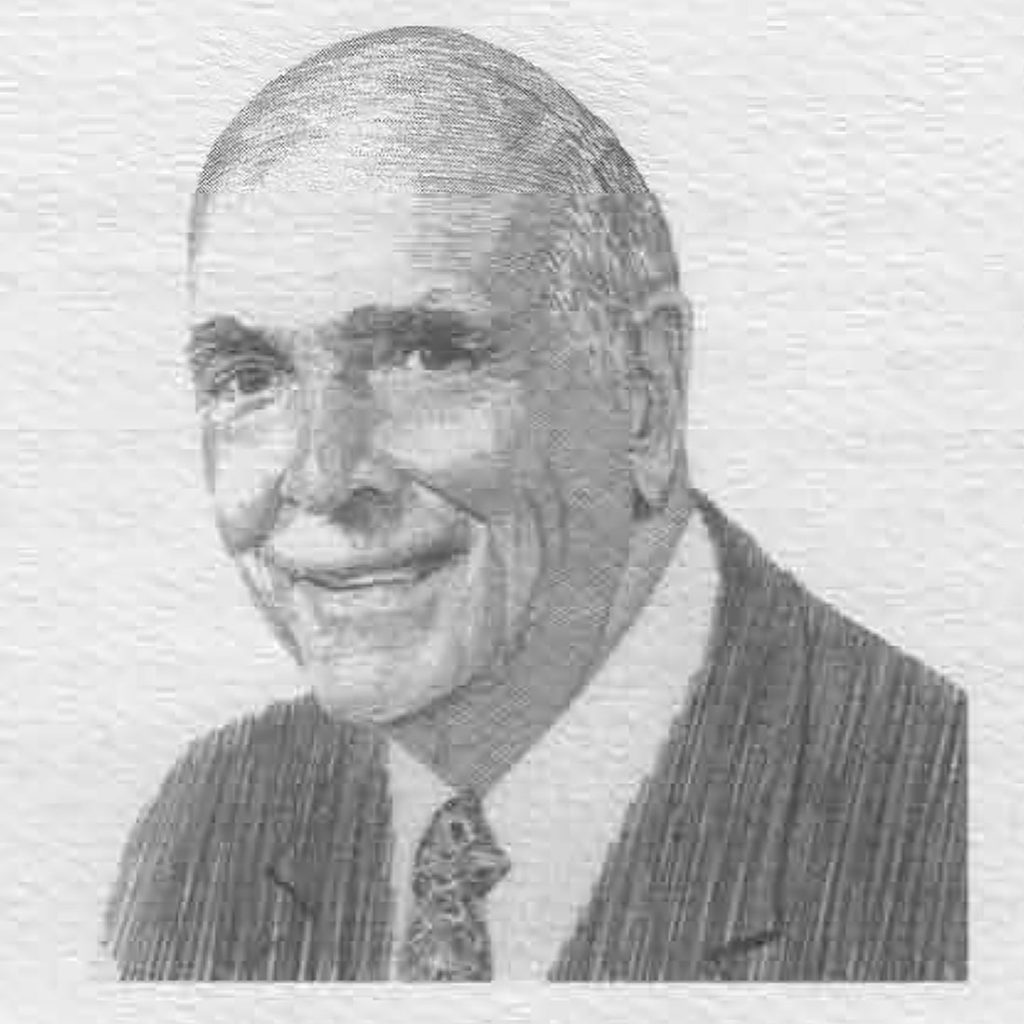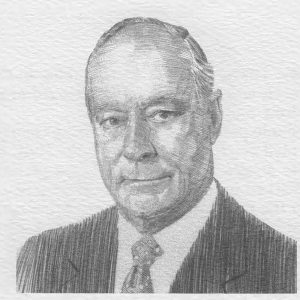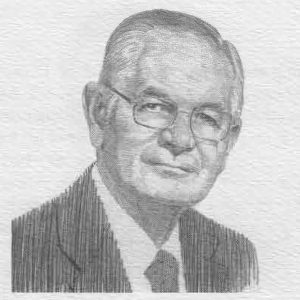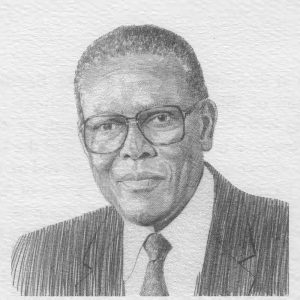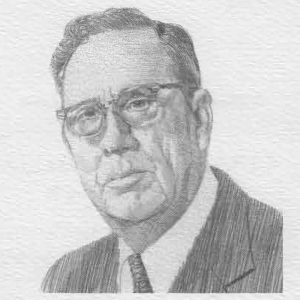Born to Margaret Woodward Evins Spencer and William M. Spencer, Jr., December 10, 1920, in Birmingham, Alabama, Bill Spencer spent his early childhood there, moving with his family to Demopolis during the Great Depression. “My father … took over the running of my grandfather’s plantation since my grandfather had been incapacitated by a stroke,” he wrote of the move. Young Bill began his high school education in the river town, moving to Chattanooga, Tennessee, to study at Baylor School, where he graduated with honors in mathematics. Next was college at the University of the South in Sewanee, Tennessee, where he distinguished himself as a member of Phi Beta Kappa, Omicron Delta Kappa, and Blue Key, graduating with a Bachelor of Science degree in chemistry (optime means) in 1941. He was named a distinguished alumnus of that institution in 1984.
While plans were for Bill to attend the University of Pennsylvania Medical School, a call to perform service for his country intervened after one year, and he joined the United States Marine Corps on April 1, 1942. Upon completion of training at Quantico, Virginia, he was awarded a regular commission in the Corps and assigned there as an instructor. He then applied for overseas duty and was assigned to the Second Marine Division, which he joined in New Zealand in 1943 and remained with until after the end of World War II.
Again, Bill Spencer’s words: “During my service with the Second Division, I was on five landings, starting with Tarawa, where I served as an artillery forward observer and a naval gunfire spotter. We were in Saipan, Tinian, Okinawa, and Iheya Shima – an island north of Okinawa – and finally Nagasaki. We were the first troops to land there after the atom bomb was dropped.”
Discharged a captain with a Bronze Star, Bill Spencer brought his college and combat education home to Alabama, a man changed by what he had seen in the Central Pacific Theatre – and a man with a firm determination to succeed in business.
In 1946 he and an assistant purchased Owen-Richards company, then a small operation with sales of about $500,000. Under his leadership, the firm would grow to be a much larger company by the name of Motion Industries, Incorporated, with multiple branches spread across the United States. Bill Spencer was elected president of the company in 1952 and chairman in 1973. Along the way, he also attended the Graduate School of Business Administration of Harvard University and oversaw a successful initial public offering of Motion Industries in 1972. Later in his tenure, Motion was merged into Genuine Parts Company, an Atlanta, Georgia-based company traded on the New York Stock Exchange. The merger was considered particularly noteworthy for its tax-free status.
After retirement from Motion, Bill Spencer joined with others to form a new company, Molecular Engineering Associates, the aim of which was to commercialize some of the outstanding research work being done at the University of Alabama at Birmingham. He also served as chairman of this company. Then, in 1986, along with Dr. John Montgomery of Southern Research Institute and Dr. Charles E. Bugg, director of the Center for Macromolecular Crystallography at UAB, he formed BioCryst Limited to make drugs by a novel method known as structure-based rational drug design. In 1994 this successful business venture by Bill Spencer had its initial public offering and is now traded on the NASDAQ stock exchange.
Along with a successful personal business career, the gentleman has also directed his business acumen and expertise to the benefit of other organizations over the years by serving as a member of the Board of Directors of Alabama Great Southern Railroad, AmSouth Bank NA, BE&K Incorporated, Health Services Foundation, Mead Corporation, Robertson Banking Company, Genuine Parts Company and Southern Research Institute. He is a current member of the BE&K, Incorporated, Emeritus Board, and the Emeritus Board of Genuine Parts Company, along with serving as an active member of the Board of Directors of Altec Industries, Incorporated; BioCryst Pharmaceuticals, Incorporated; Molecular Engineering Associates, Incorporated; Secretech, Incorporated; and Southern Research Technologies.
A member of St. Mary’s Episcopal Church, he is currently a trustee for the National Trust for Historic Preservation, the Robert Meyer Foundation, and the UAB Research Foundation. These current service efforts come as the latest chapters in a long history of such service: in the past, he has served as president of the Alabama Safety Council, the Birmingham Area Chamber of Commerce, and the Birmingham Festival of Arts; as the chairman of the Baptist Medical Center Fundraising Drive and St. Vincent’s Hospital Foundation; as president and chairman of Baptist Hospitals Foundation of Birmingham, Incorporated; and as cochairman of the Birmingham Symphony Fund and the United Appeal Drive. He has also served on the Board of Visitors for The University of Alabama College of Commerce and Business Administration and as a member of the UAB President’s Council. Bill also founded the Spencer Chair of Medical Leadership and the Evalina B. Spencer Chair of Oncology at the University of Alabama at Birmingham.
Continuing the tradition of commitment to and leadership of the Birmingham Museum of Art begun by his father in 1959, Bill Spencer served as chairman of the Museum Board from 1986 to 1994, leading the Museum’s successful transition from an outstanding regional museum to an institution that is now enjoying national attention. His leadership was a key to the success of the $20 million campaign to renovate and expand the Museum, transforming it into the extraordinary new museum – with sculpture garden – that exists today.
Bill Spencer has served as president of The Club, The Downtown Club when it was operational, and The Mountain Brook Club. He was chosen as Outstanding Alabama Philanthropist in 1989 by the Alabama Chapter of the National Society of Fundraising Executives and named Citizen of the Year in 1992 by the Women’s Committee of 100.
Bill enjoys spending many of his so-called retirement days at Waldwick, the plantation home of his youth, in Gallion, Alabama. Architectural historians consider the home one of Alabama’s finest examples of Gothic Revival architecture.
The Alabama business community considers William M. Spencer, III, one of the finest examples of a life led in pursuit of business excellence, and in service to his community

